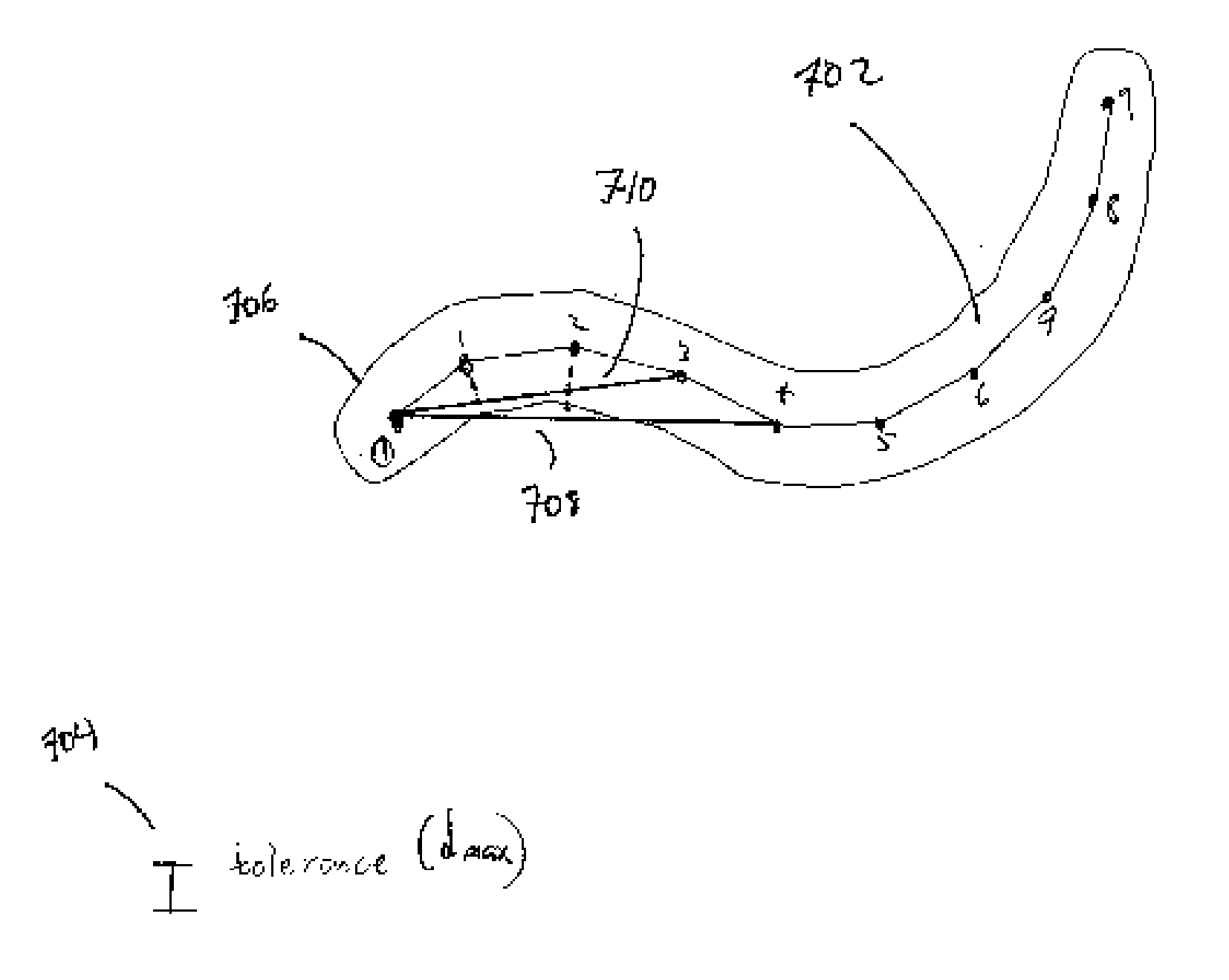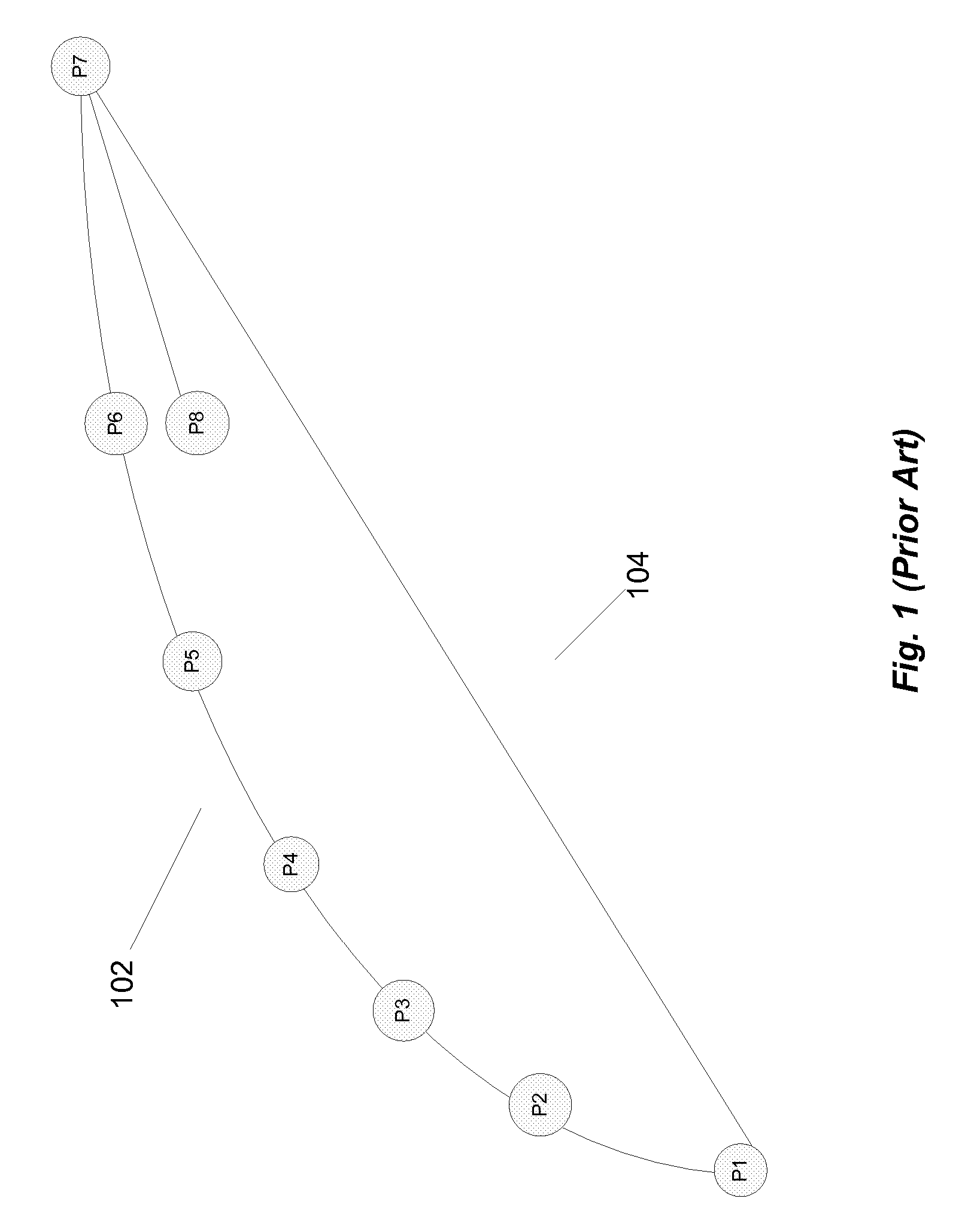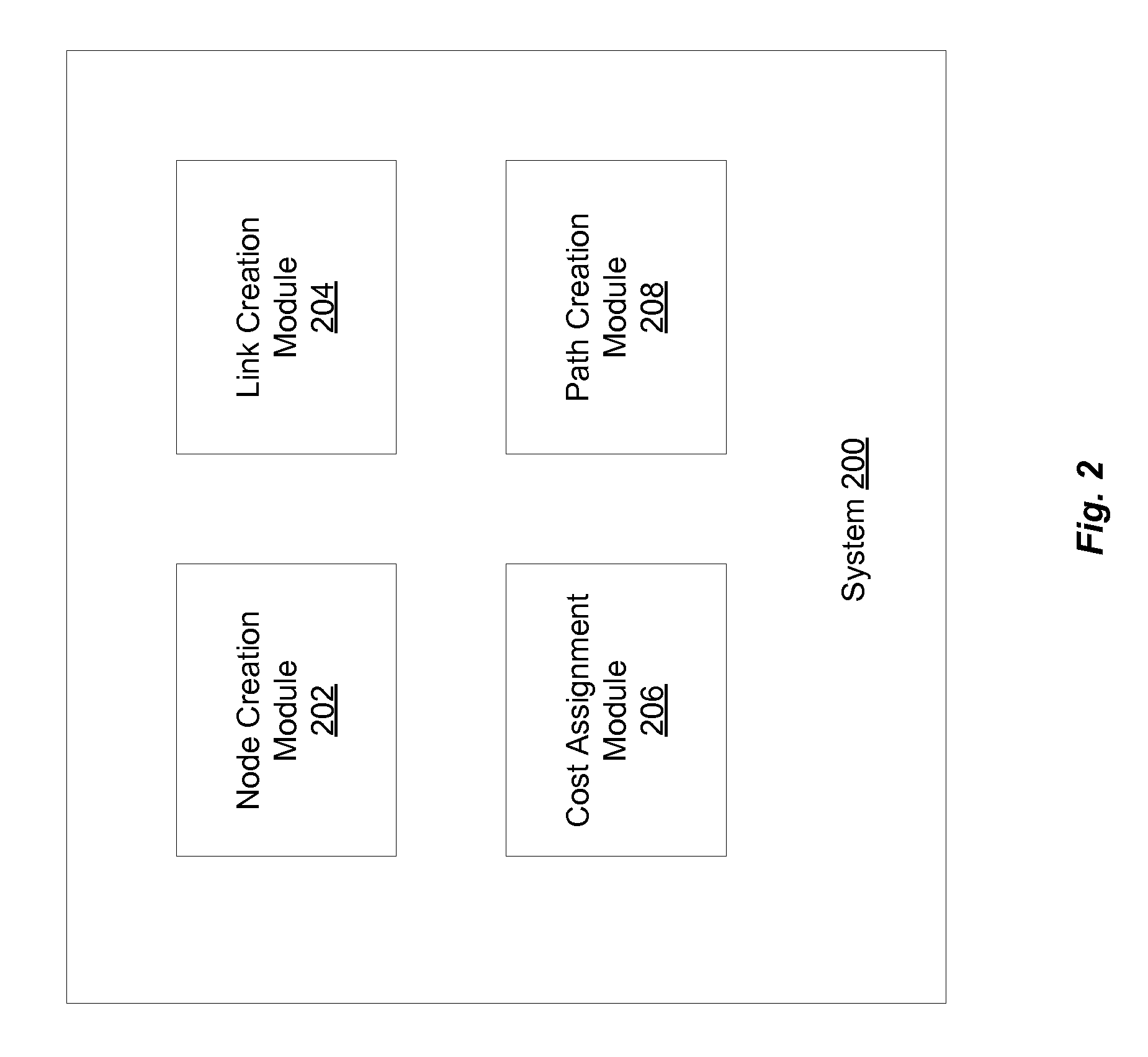Generalization of Features In A Digital Map
a technology of digital maps and features, applied in the field of generalization of features in digital maps, can solve the problems of large data files, difficult to accurately represent complex shapes like mountain roads, and long processing time, etc., and achieve the effect of simplifying polylines
- Summary
- Abstract
- Description
- Claims
- Application Information
AI Technical Summary
Benefits of technology
Problems solved by technology
Method used
Image
Examples
Embodiment Construction
[0027]FIG. 2 illustrates a block diagram of a system 200 for generalizing features in a digital map in accordance with an embodiment of the present invention. System 200 includes a node creation module 202, for creating a set of nodes; a link creation module 204 for creating a set of links; a cost assignment module 206 for assigning costs to the links and nodes created by link creation module 204 and node creation module 202, respectively; and a path creation module 208 for creating a least-cost path through a graph created as described now with respect to FIG. 3.
[0028] As noted above, in order to create a map with generalized features in accordance with the present invention, a graph is created. FIG. 3 illustrates the construction of such a graph in a preferred embodiment. A graph is constructed by first creating 302 a set of nodes, as described further below with respect to FIG. 4. Next, links are created 304 between the nodes, as described further below with respect to FIG. 5. F...
PUM
 Login to View More
Login to View More Abstract
Description
Claims
Application Information
 Login to View More
Login to View More - R&D
- Intellectual Property
- Life Sciences
- Materials
- Tech Scout
- Unparalleled Data Quality
- Higher Quality Content
- 60% Fewer Hallucinations
Browse by: Latest US Patents, China's latest patents, Technical Efficacy Thesaurus, Application Domain, Technology Topic, Popular Technical Reports.
© 2025 PatSnap. All rights reserved.Legal|Privacy policy|Modern Slavery Act Transparency Statement|Sitemap|About US| Contact US: help@patsnap.com



